Both of the Savannah cemeteries I visited last week were unusual in one way. Not that one was a burial ground dating back to colonial times and other was founded by Victorians who believed that cemeteries should be beautiful places of respite; I’ve encountered both in other cemeteries.
Not the weathered stones and crumbling bricks of the colonial cemetery, nor the enormous trees and bushes and flowers of the 19th-century cemetery, nor the interesting funerary art, nor even the fact that 21st-century burials continue in the latter cemetery. I’ve seen all that, in one way or another, at burial grounds in places as varied as Austin, Boston, Buffalo, Charleston, Chicago, Dayton, Fairbanks, Los Angeles, Milwaukee, New York, Richmond, San Antonio and more.
Rather, living people — besides me and the occasional jogger or groundsman — populated both Colonial Park Cemetery in downtown Savannah and Bonaventure Cemetery on the eastern edge of the city. With such notable exceptions as Arlington National Cemetery or Koyasan in Japan, which are destinations in their own right, cemeteries tend to be mostly devoid of living people.
As the name implies, Colonial Park functions as a downtown park, with people crossing it in some numbers, and a few looking around (though my pictures don’t really reflect that). As for Bonaventure, Midnight in the Garden of Good and Evil seems to have put it on the tourist map. When I was there, not only did I see people alone and in pairs wandering around, but also a few guided-tour groups (again, I didn’t take many pictures of them).
The six-acre Colonial Park has been a cemetery since 1750 and no one new has been buried there since 1853.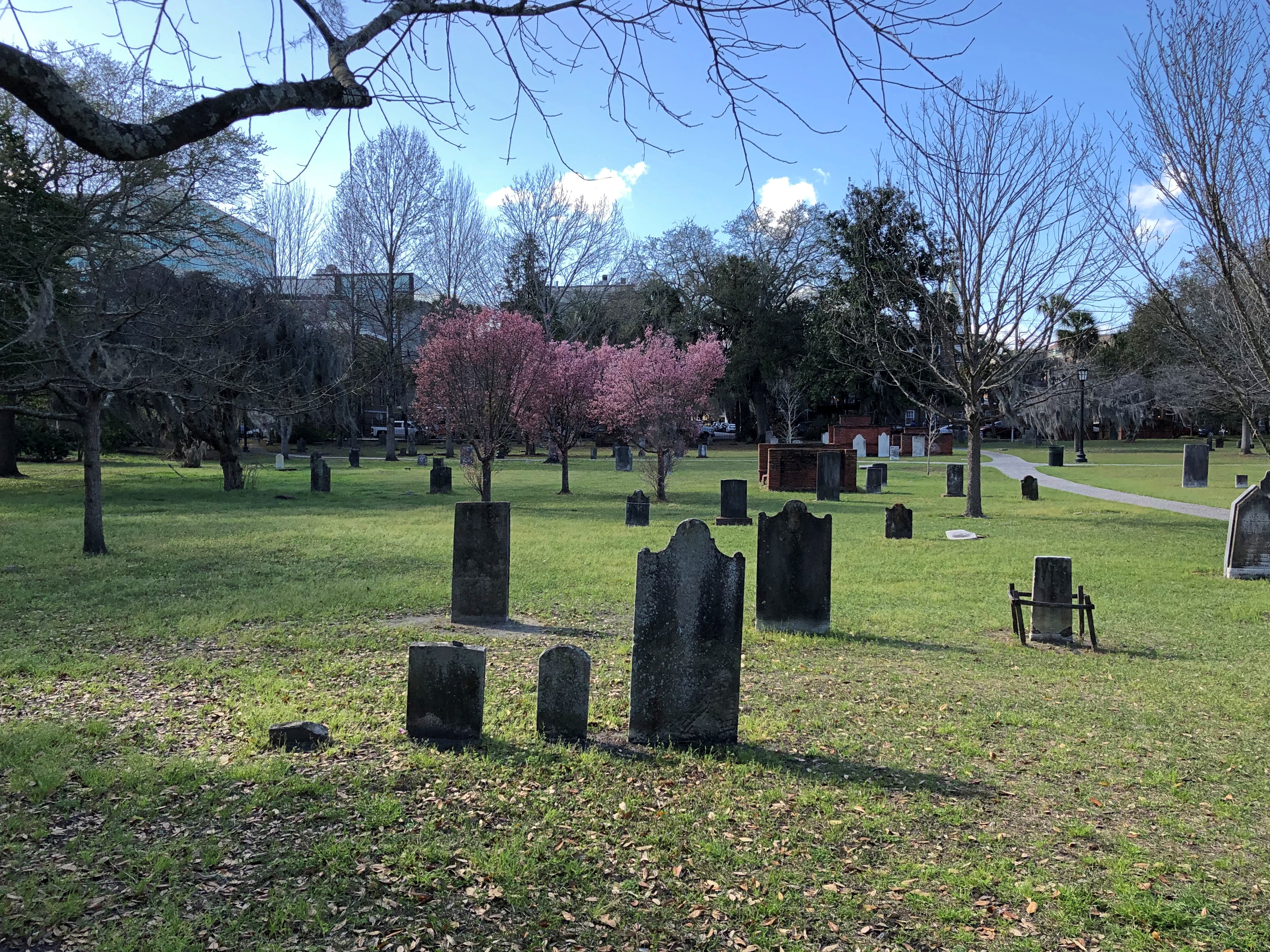
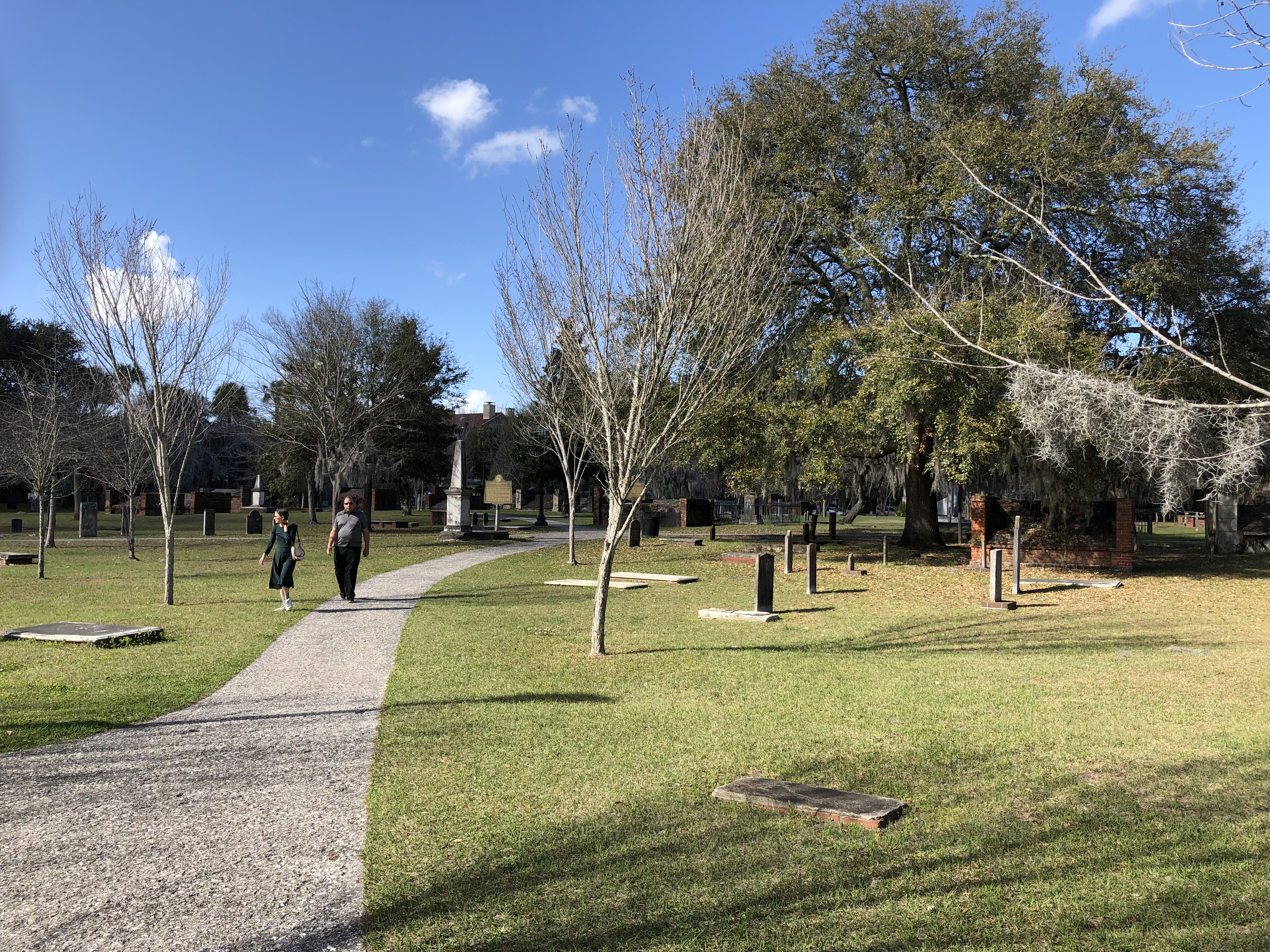
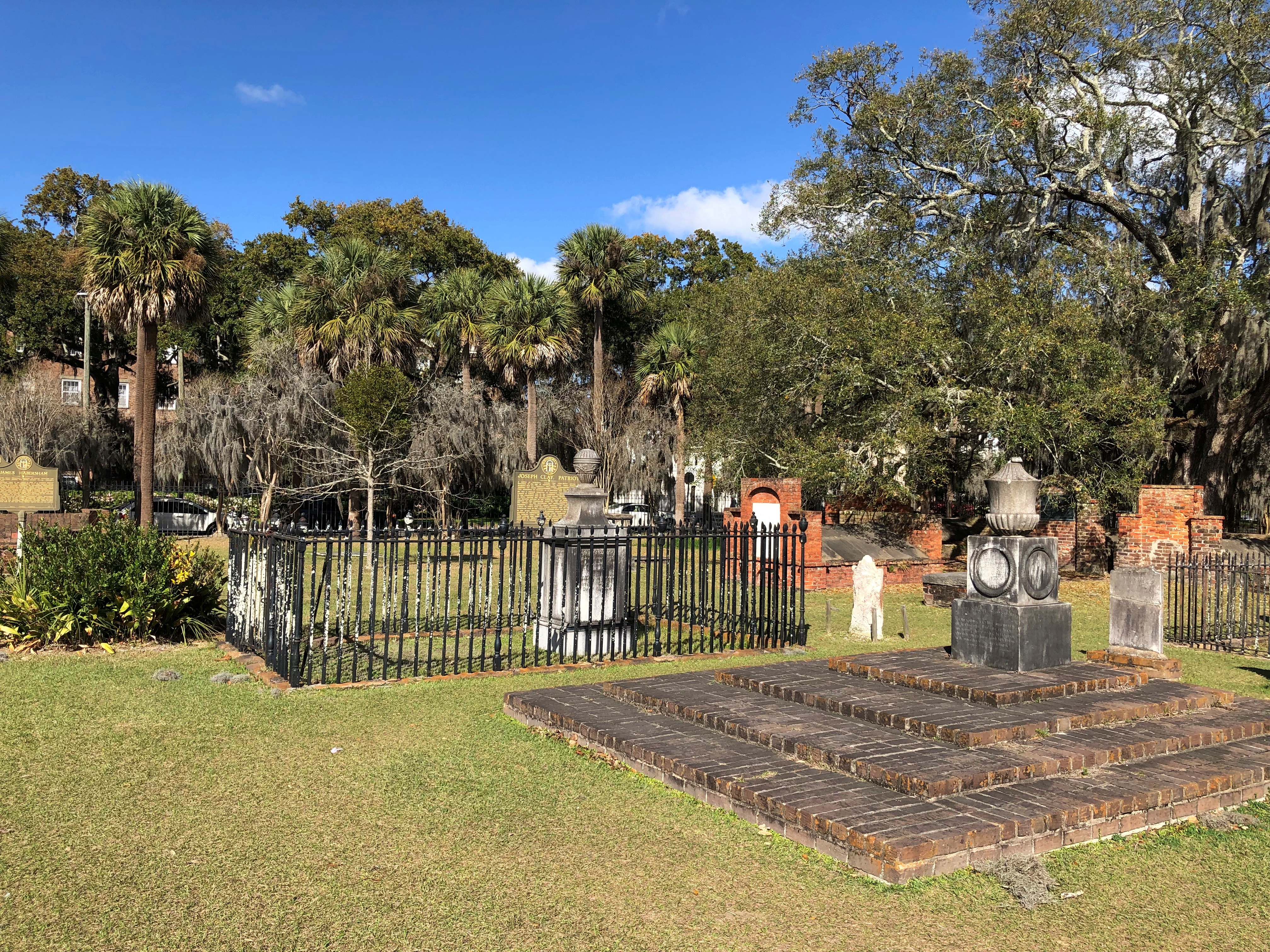
Plenty of weather-worn stones.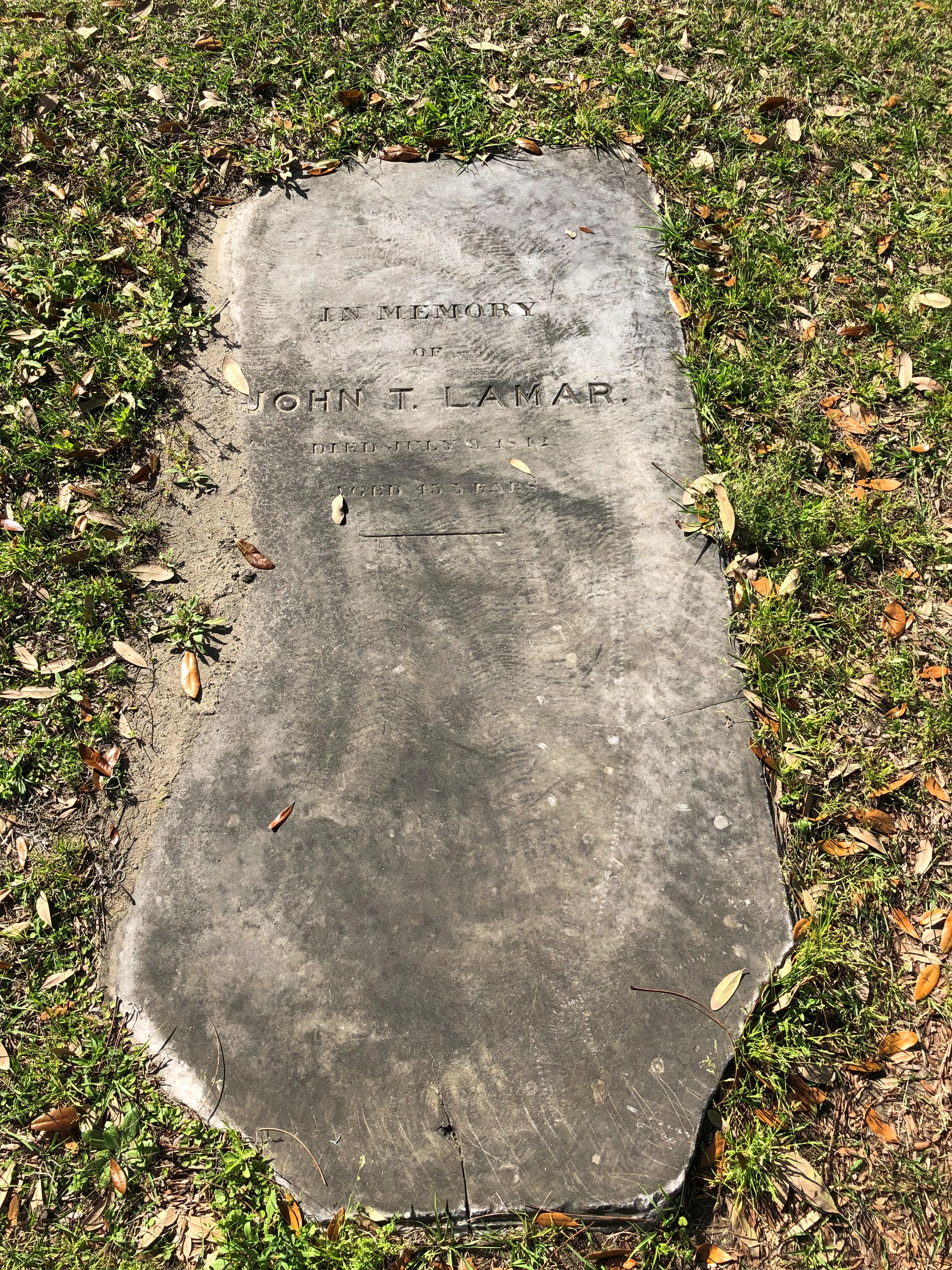
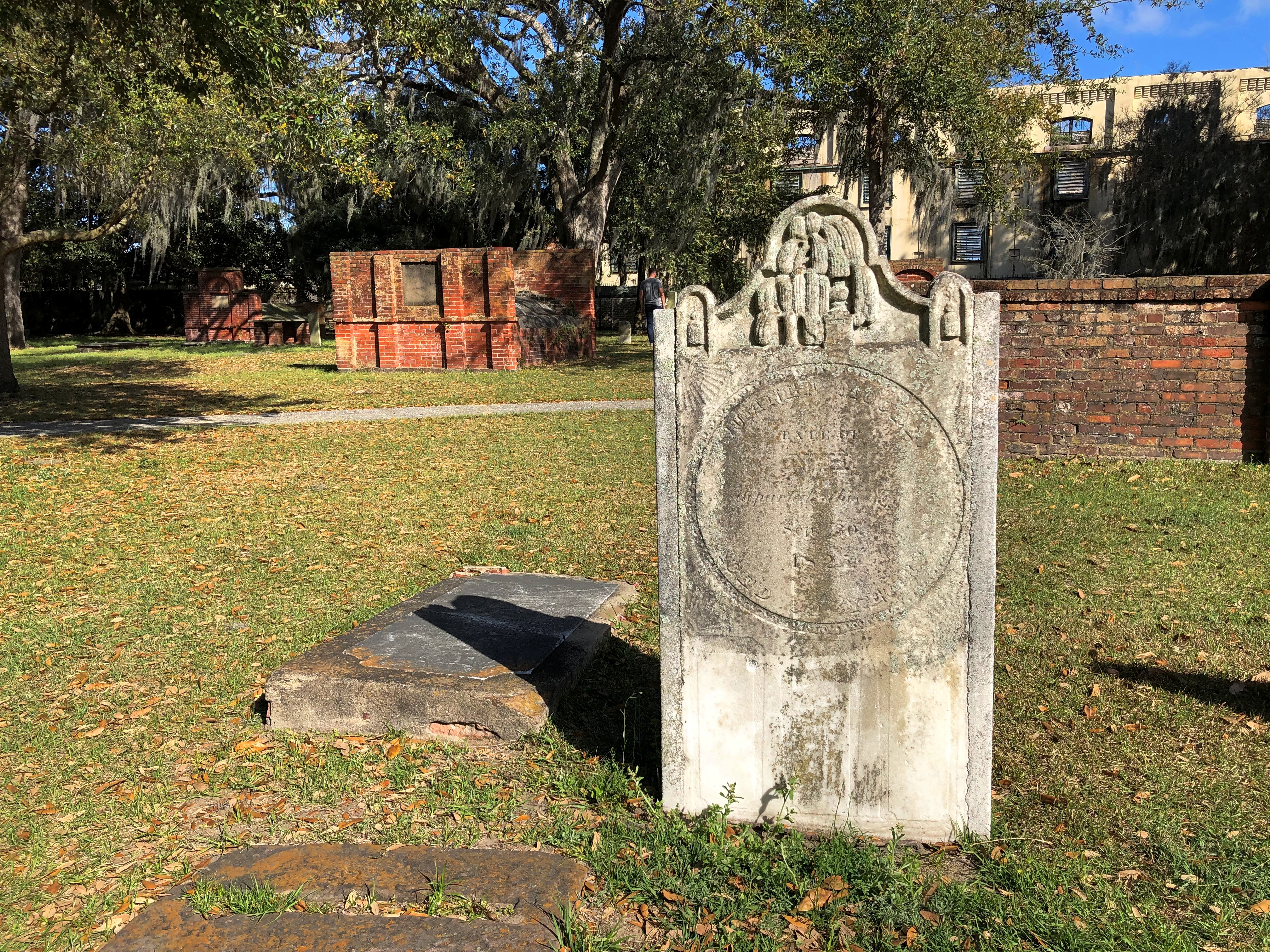
The cemetery also sports a number of brick tombs, the sort you sometimes see in 18th- and 19th-century grounds.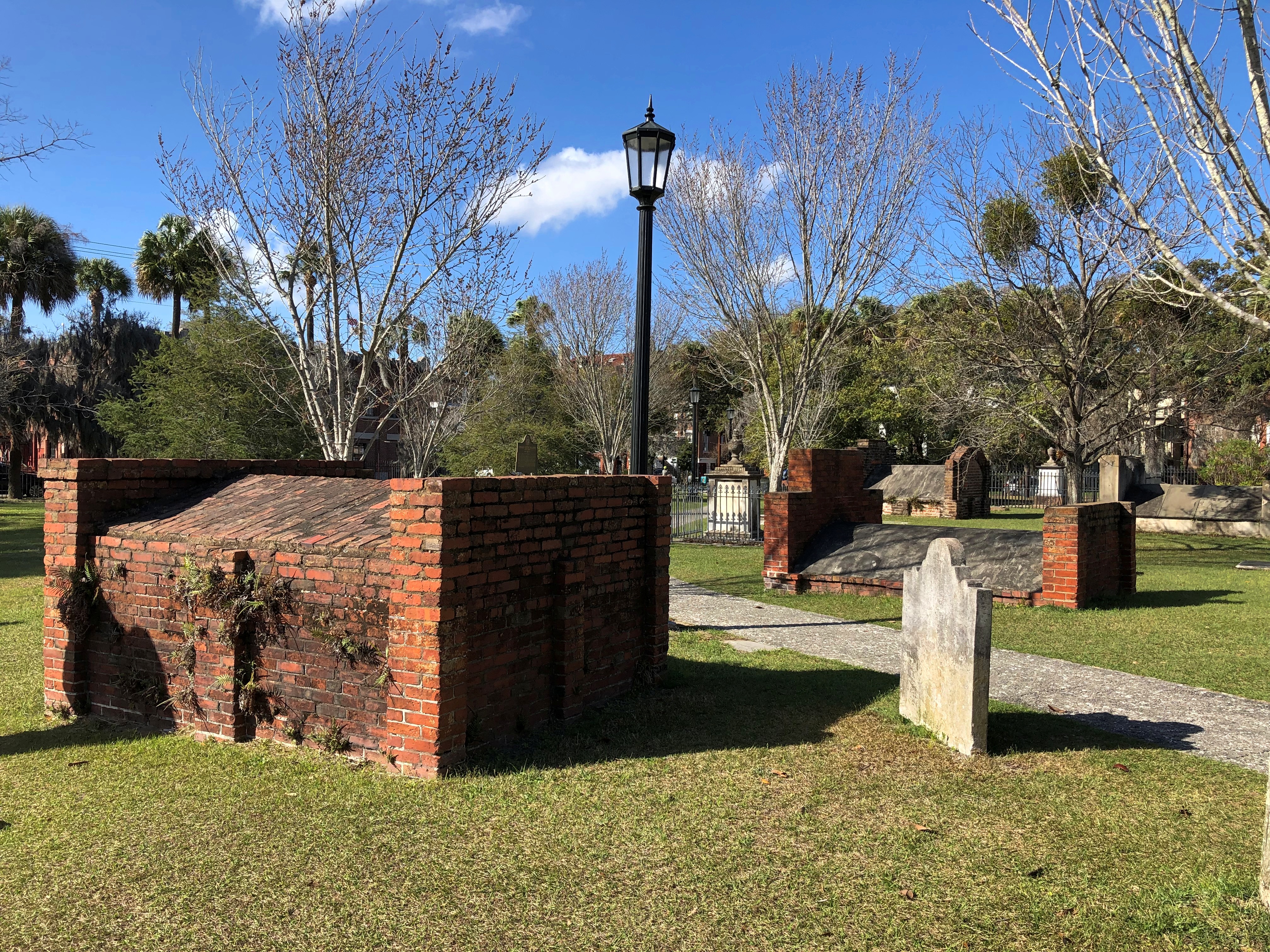
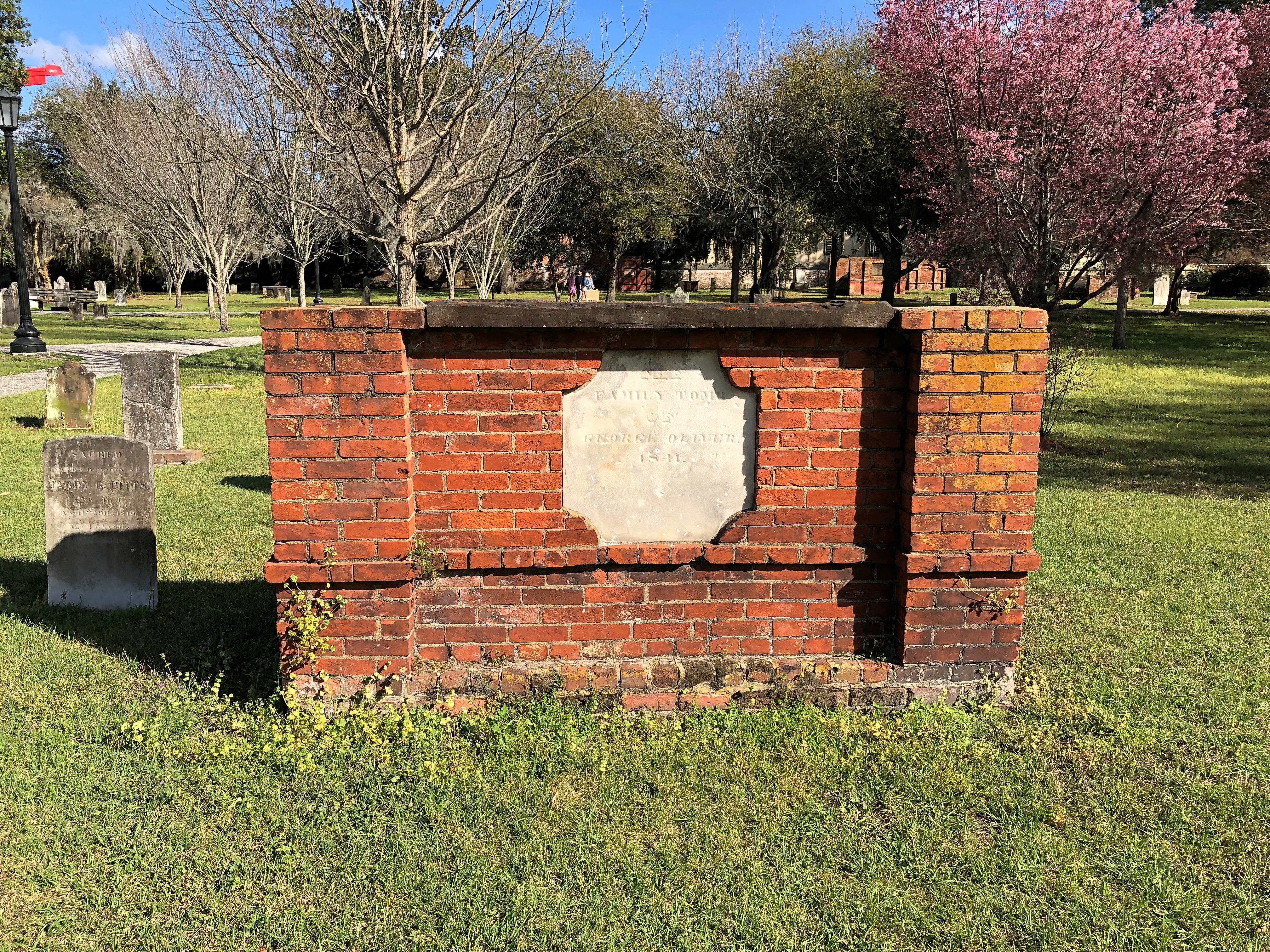

A number of stones were embedded in a brick wall marking one of the boundaries of the grounds, which you don’t see that often.
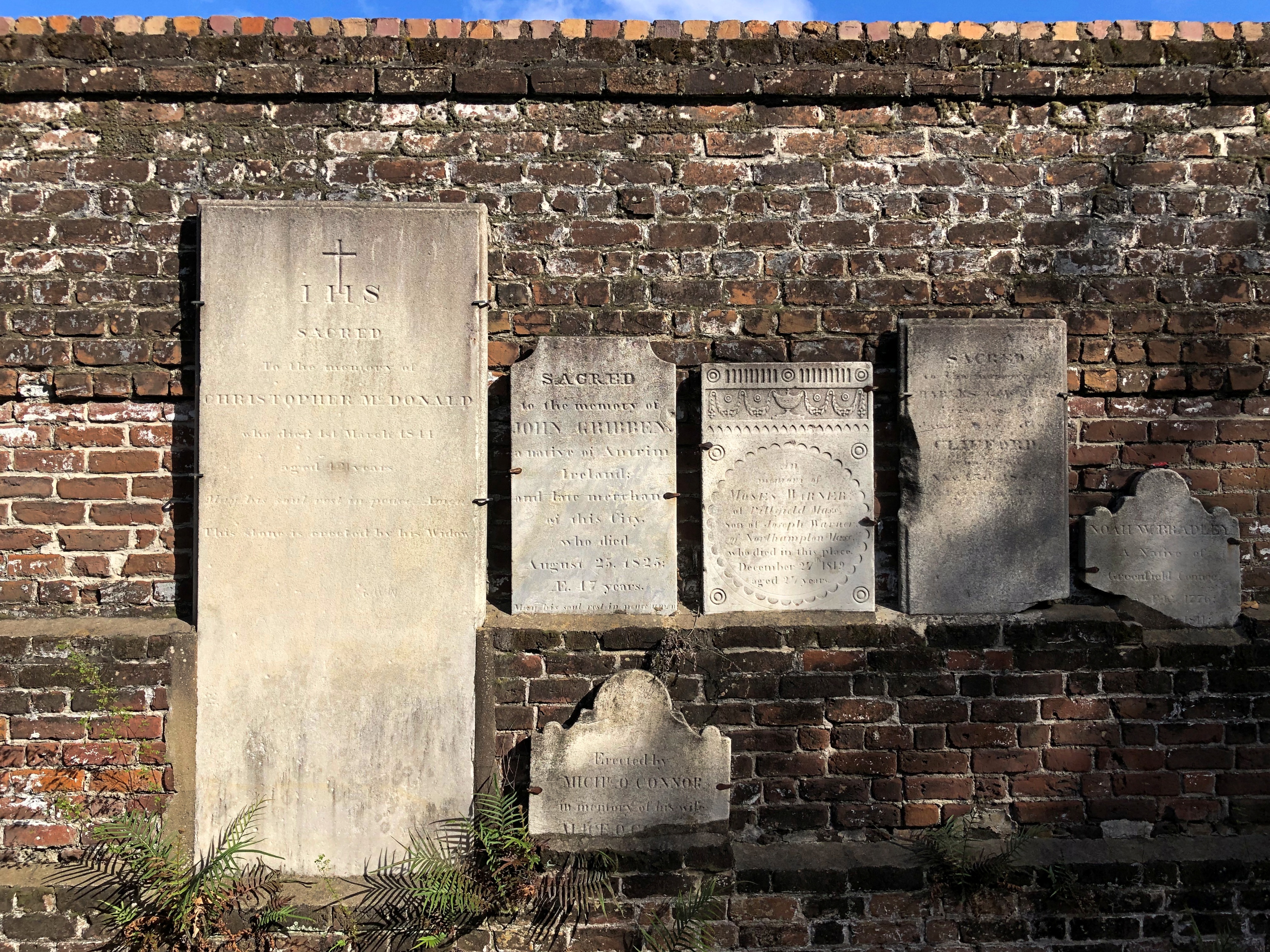
I went looking for only one specific memorial, and I found it by looking it up on Google Images and then wandering around, looking for it in person.
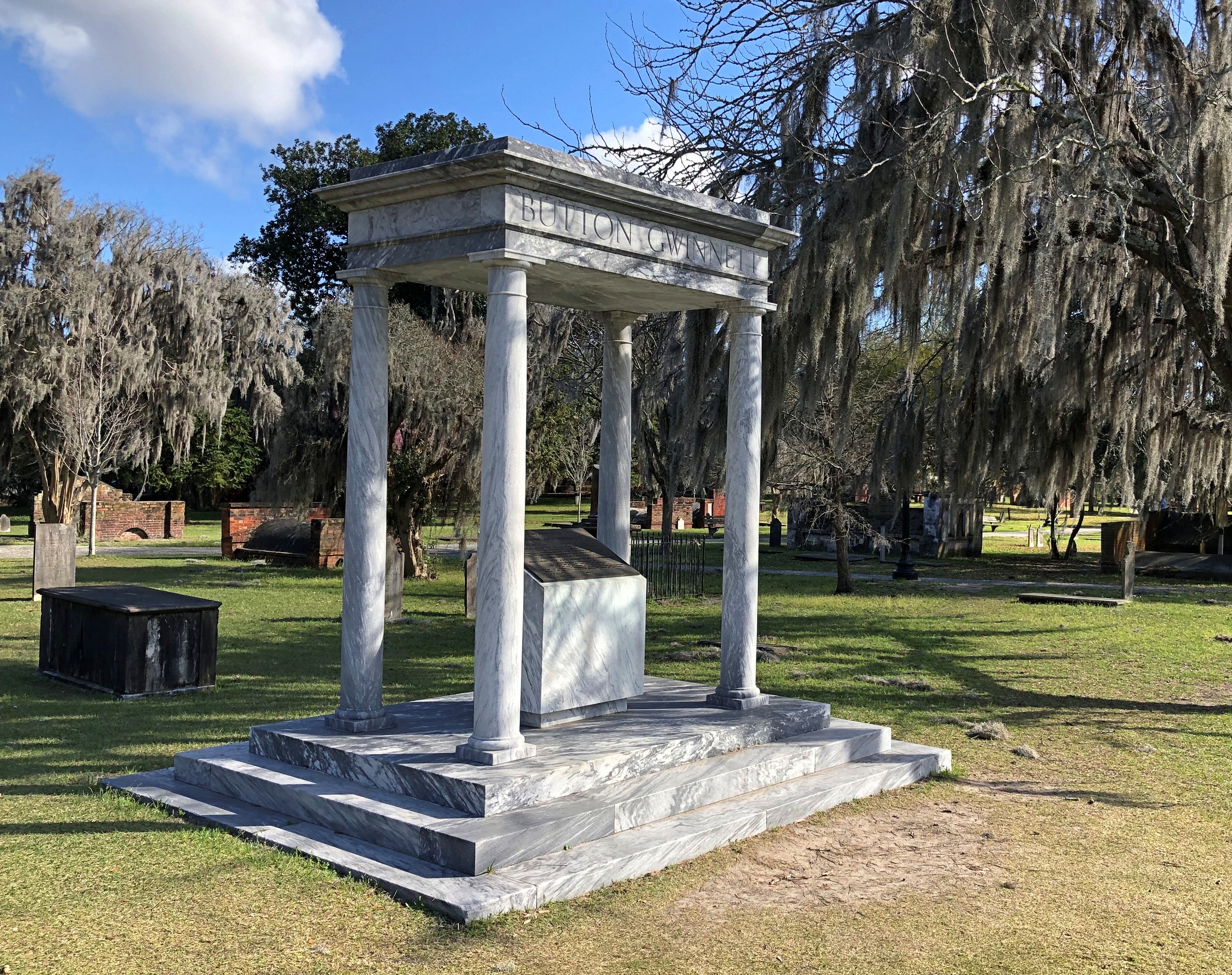
Button Gwinnett. Button and I go back a ways. My 8th grade history teacher, the one-armed Mr. Robinson, tasked us to write a report on one of the signers of the Declaration of Independence — but not a famous one like John Hancock — and I picked Gwinnett, maybe for his curious name. Very little information on him was available in those pre-Internet days, but I made the best of it. I think.
The memorial’s plaque, put there in 1964, says that Gwinnett’s remains are “believed to lie entombed hereunder.” So his whereabouts aren’t quite known. Close enough, I figure.
More recently, Gwinnett had his 15 minutes of posthumous fame in the form of a late-night TV gag.
The man who shot Gwinnett to death in a 1777 duel, Lachlan McIntosh (d. 1806), is also buried at Colonial Park, but I didn’t look for him. McIntosh was, incidentally, acquitted of murdering Gwinnett. Tough luck, Button.
I arrived at Bonaventure about an hour before it closed for the day, so I saw it illuminated by the afternoon sun.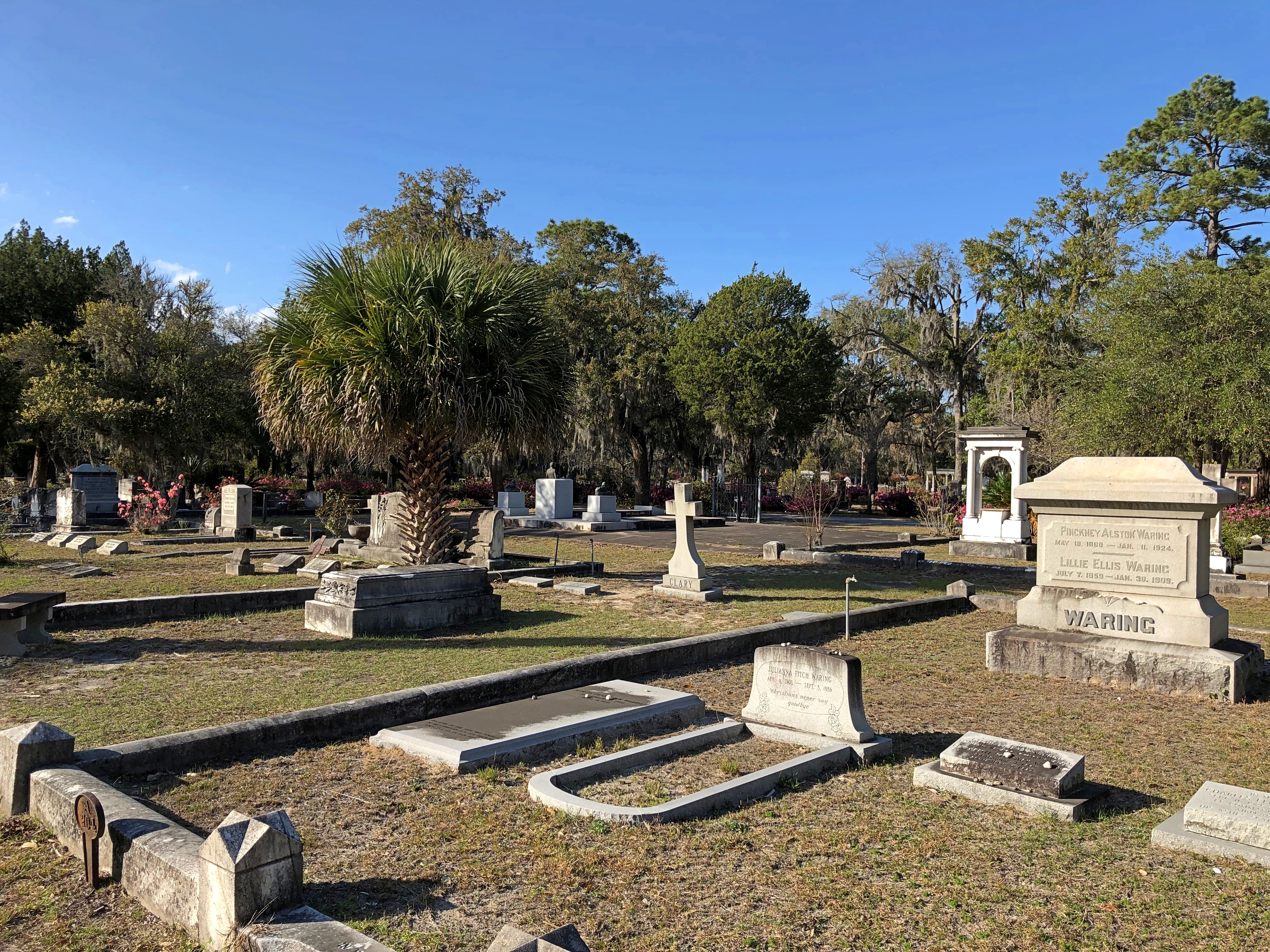

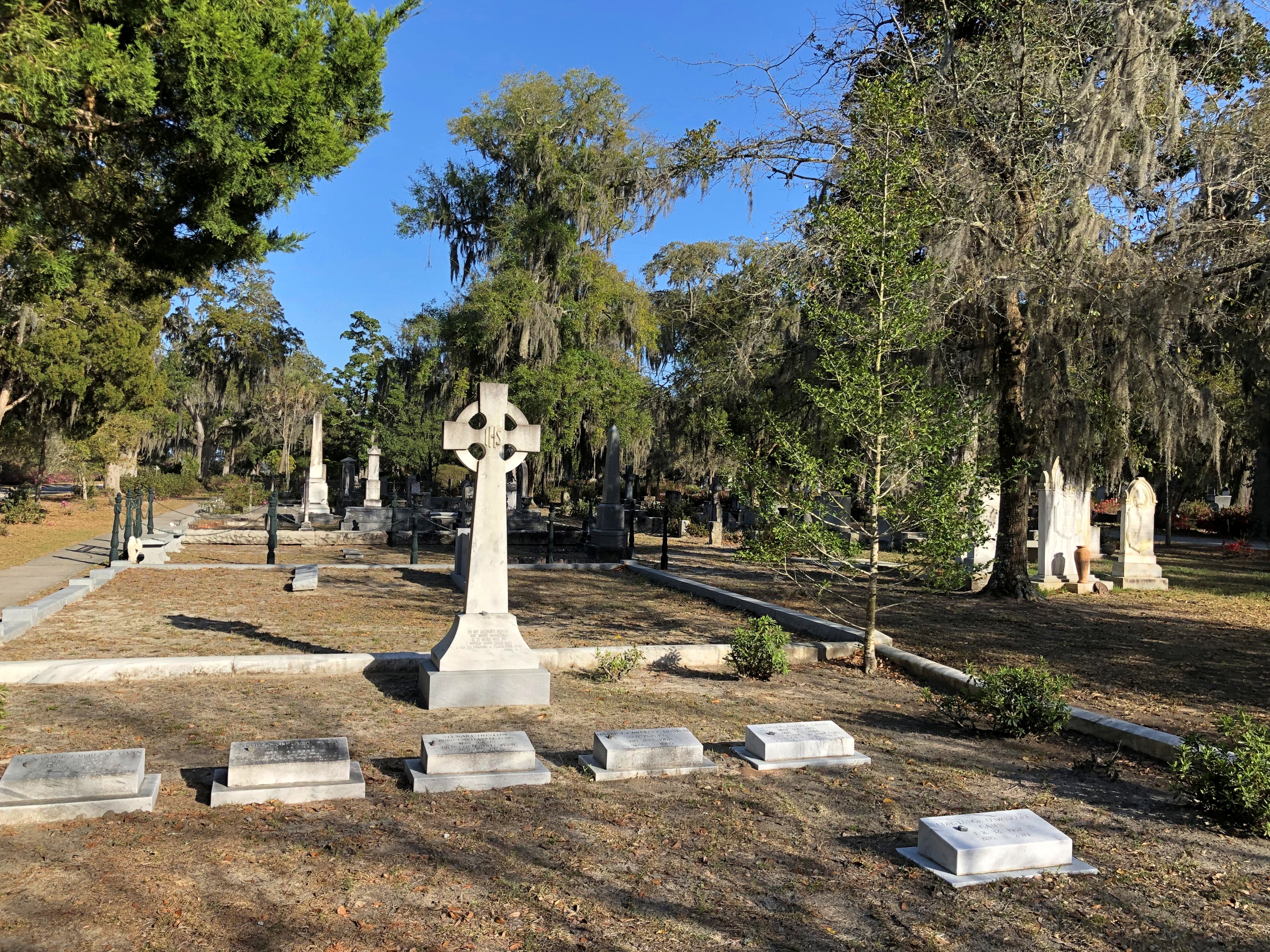
I recognized the paths that cross the cemetery as former thoroughfares for horse-drawn carriages, either hearses or otherwise.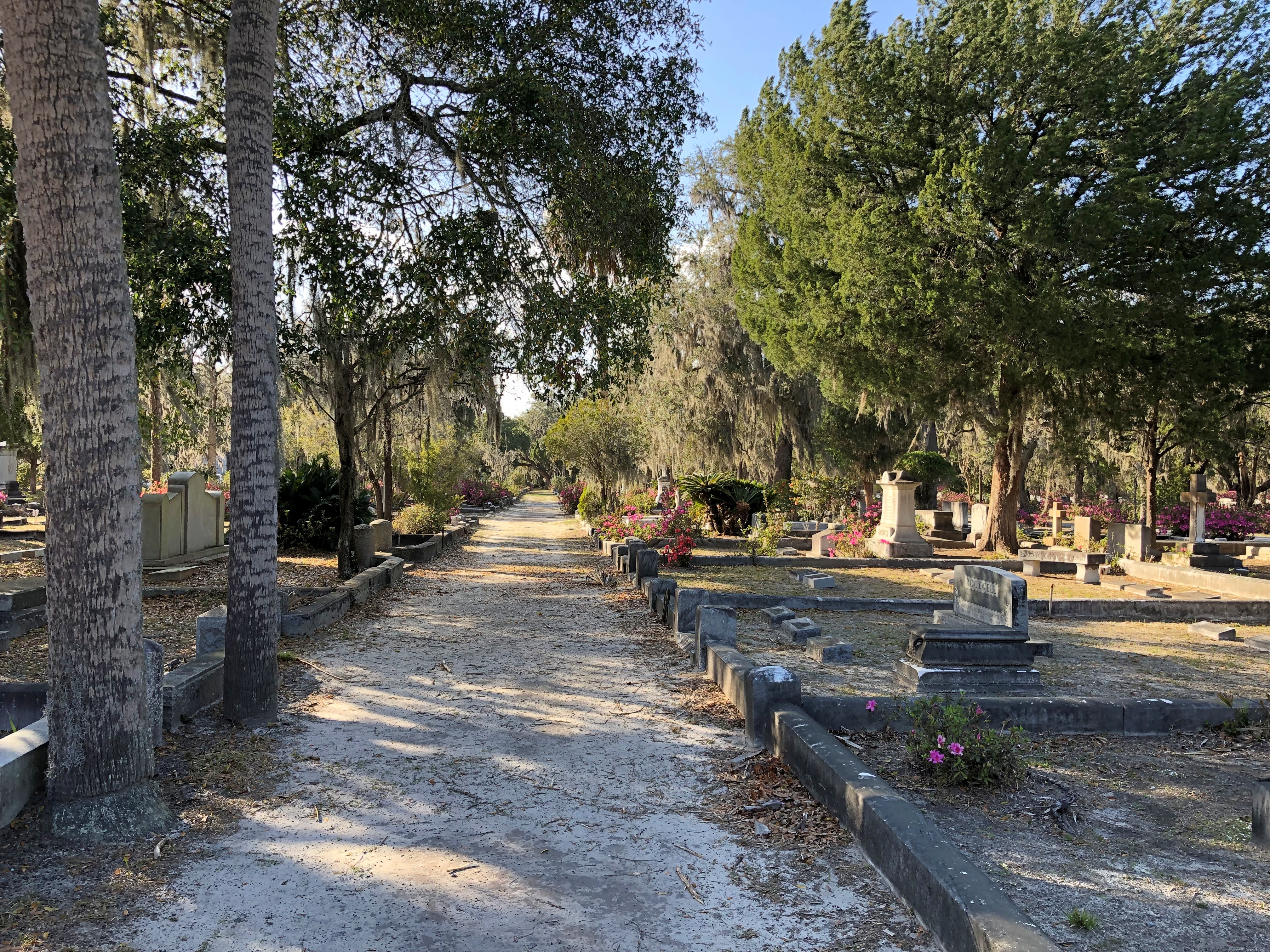
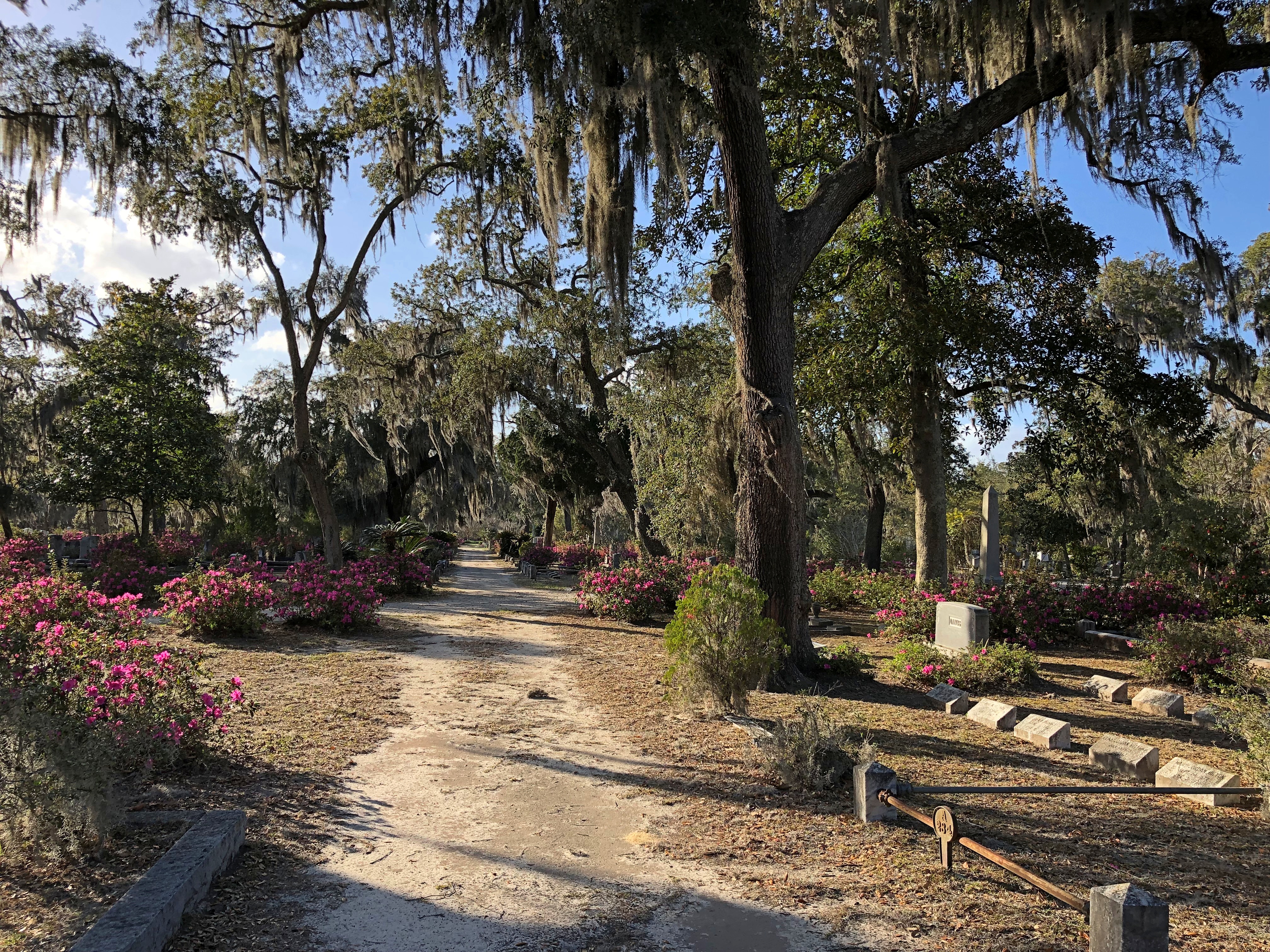
As the second image illustrates, azaleas were in full bloom across the grounds, which was also populated by Southern live oaks, palms and much other flora. In its lushness, and Spanish moss, the cemetery reminded me of Magnolia Cemetery in Charleston, but without the water features or alligators.
The 160-acre Bonaventure, formerly the site of a plantation of the same name, became a cemetery in 1868, with the city acquiring it in 1907. It’s still an active cemetery.
There aren’t many mausoleums, though there are some sizable memorials and a little funerary art.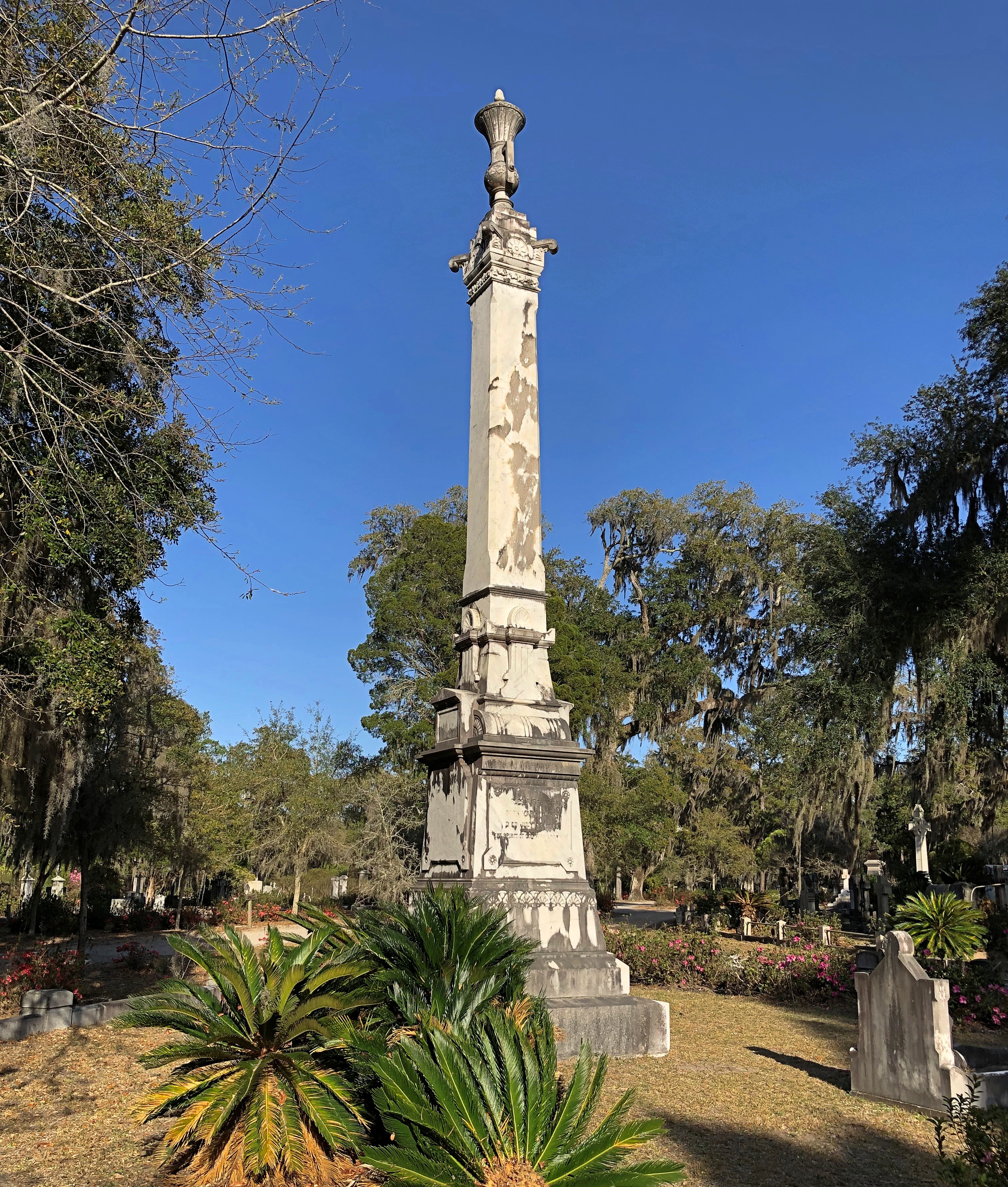
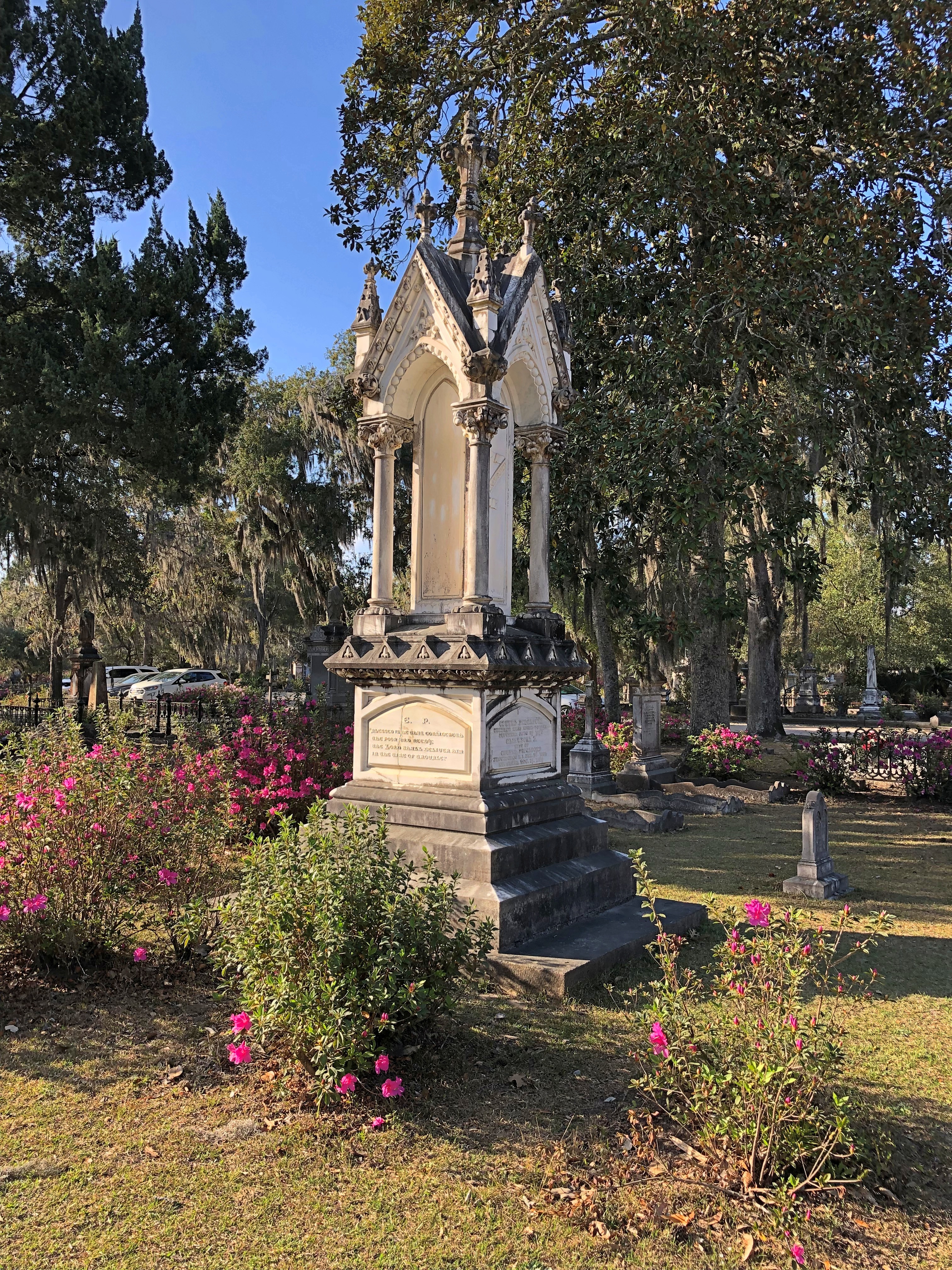
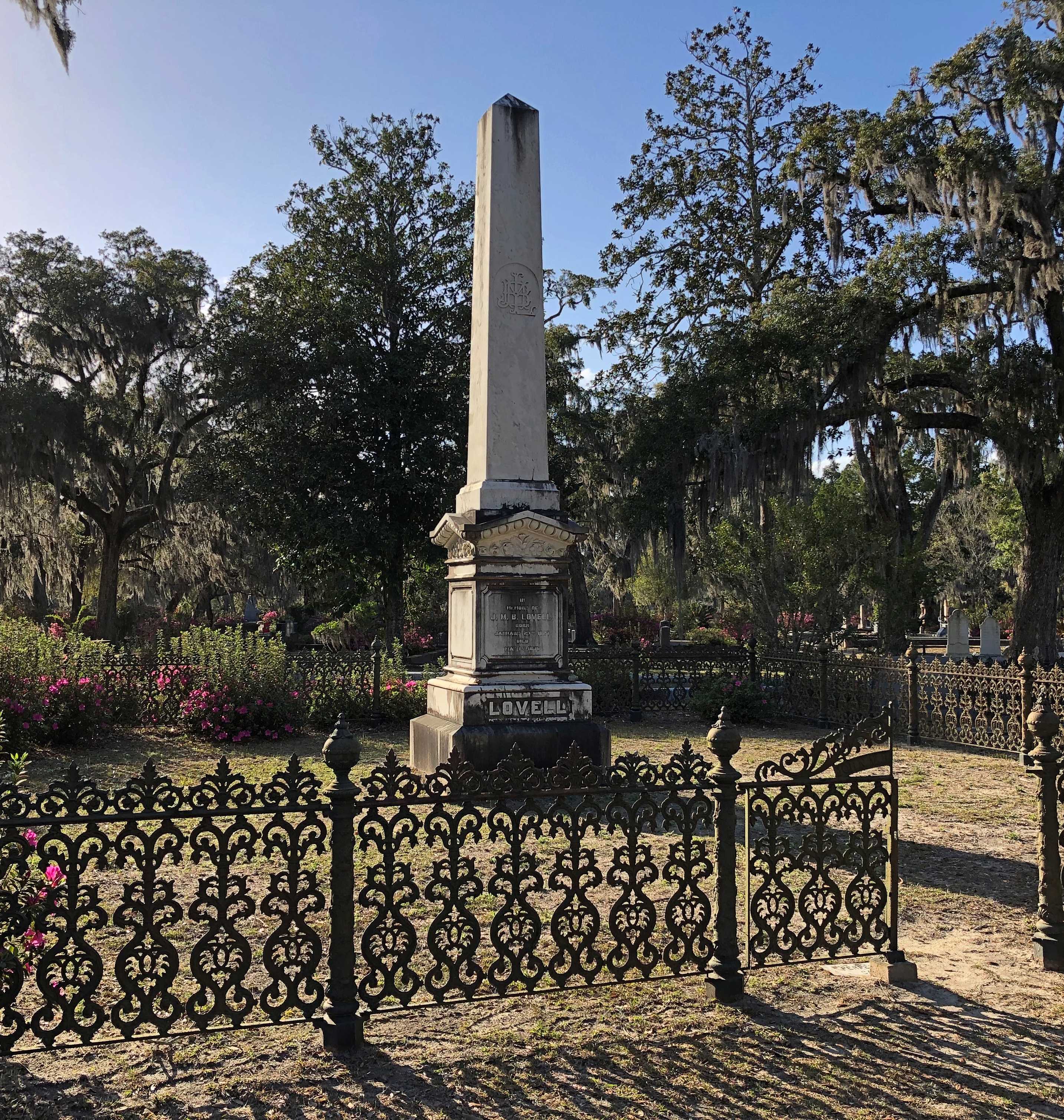
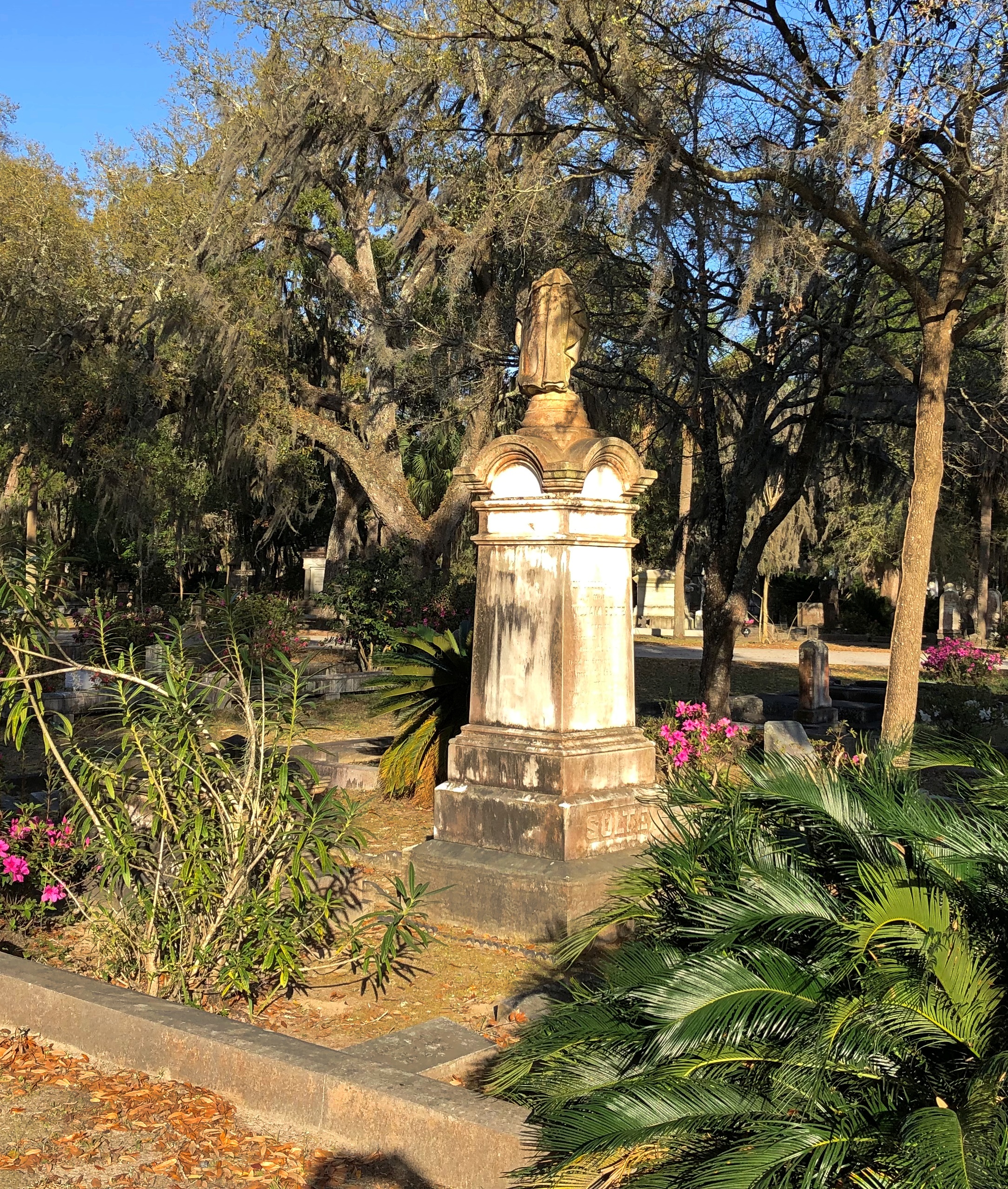
I didn’t go looking for notable permanent residents. Who, after all, could compare with Button Gwinnett? But I did see some intriguing stones.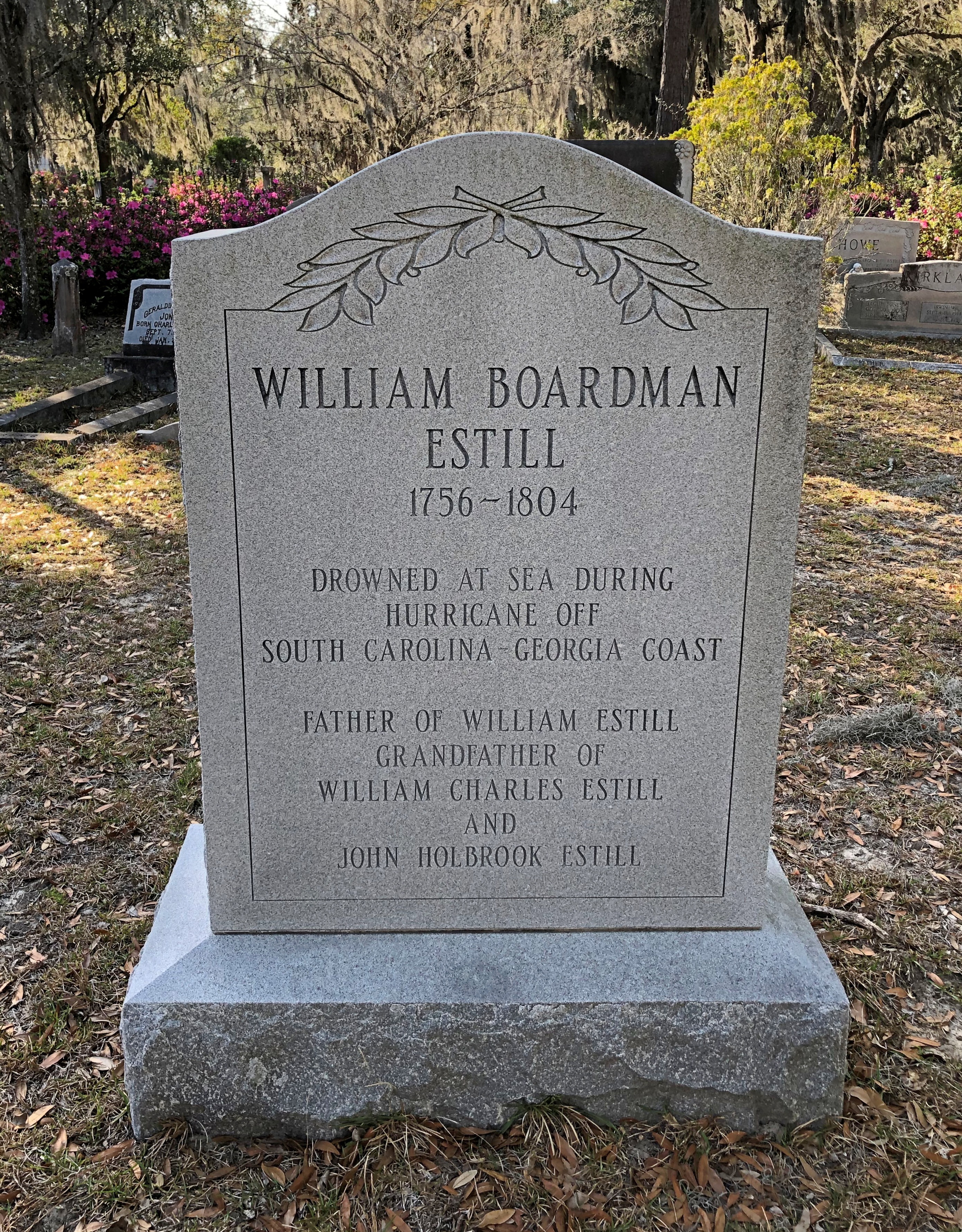
There’s a story in that stone, turns out. More than one. For his part, William Boardman Estill was a veteran of the Revolution, as noted on the back of his stone.
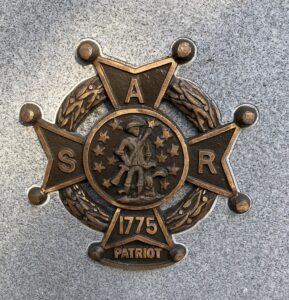 He was also the father and grandfather of some notables, who are listed on the stone, which looks like a fairly recent replacement (erected by the Sons of the American Revolution, would be my guess). William Estill was editor of the Charleston Daily Advertiser, while John Holbrook Estill was editor of the Savannah Morning News, besides being wounded at First Manassas.
He was also the father and grandfather of some notables, who are listed on the stone, which looks like a fairly recent replacement (erected by the Sons of the American Revolution, would be my guess). William Estill was editor of the Charleston Daily Advertiser, while John Holbrook Estill was editor of the Savannah Morning News, besides being wounded at First Manassas.
Somehow William B. Estill got caught at sea in the great hurricane of 1804, a storm I’d never heard of till now. Bad luck for him, since “the hurricane of 1804 was the first since 1752 to strike Georgia with such strength. Damage to ships was considerable, especially offshore Georgia,” says Wiki, citing a book called Early American hurricanes, 1492–1870 (1963).
Damage to coastal Georgia and South Carolina was also considerable, including the destruction of Ft. Greene on Cockspur Island, later the site of Ft. Pulaski.
“Once the Revolutionary War ended, the new United States would build a fort on the site of Fort George in 1794-95,” the National Park Service says. “This new fort was constructed very much like Fort George (earth and log) and would be named for the Revolutionary War hero, General Nathaniel [sic] Greene. The life of Fort Greene would be short and tragic. In September 1804, a hurricane swept across the island, washing away all vestiges of the Fort.”